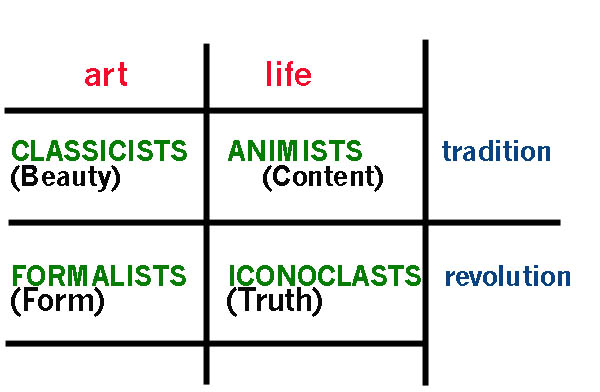Sound & Motion class 6
Contents
- 1 Reading for next week
- 2 Editing with Premiere
- 3 Batch Log and Capture
- 4 Using scopes to make chroma and luminance adjustments in video
- 5 Create and save an effect preset
- 6 Apply an effect preset
- 7 Asn. 3 due
- 8 Introduction to Asn. 4
- 9 Scott Mc Cloud's 4 types of art
- 10 Telling stories from the past
- 11 War movies
Reading for next week
Read the articles currently listed in the Week 10 folder:
- After Effects basics
- Basics of Film Lighting
- Lighting in a Nutshell
- Lighting Right
- shots and lighting
- White Balance_Time_Lighting
Editing with Premiere
- Log and Batch Capture
- Image processing and Effects
Batch Log and Capture
You can specify which shots you want to use from source tapes by logging them as a set of offline files for later capture. If you set device‑control options in the Preferences dialog box to remotely control your camera or deck, you can create offline files by using the clip‑logging controls in the Capture panel, and then use the Batch Capture command to capture the logged clips automatically. If you have a list of In and Out points, you can log them manually without a device online; simply enter each shot’s In and Out points and click the Log Clip button. You can also log frame numbers using a separate logging or spreadsheet program and then import the spreadsheet into Adobe Premiere Pro as a list of offline files.
- In the Capture panel, make sure that your device is online, as indicated above the preview.
- Insert a tape into your device. Adobe Premiere Pro prompts you to name the tape. Be sure not to give any two tapes you log the same name.
- Use the controls in the Capture panel to move to the first frame in your first shot, and click the Set In button. Then move to the last frame in the shot and click the Set Out button.
- In the Setup area of the Logging pane, choose your media type from the Capture pop‑up menu.
- If you want to capture some frames extending beyond the In and Out points of each clip, enter the number of frames for these handles in the Handles setting of the Capture section.
- Click the Log Clip button in the Timecode area of the Logging pane to log the clip you identified. Name the clip when prompted. Adobe Premiere Pro logs the clip by placing an offline file for it in the Project panel.
- Repeat steps 2 through 6 to log each shot you want to batch capture.
- Highlight clips in project window
- Close capture window and go to File/Batch Capture; click OK
Using scopes to make chroma and luminance adjustments in video
Apply effect for color and or luma correction by choosing effect from Effects panel (lower L) and dragging onto a clip in the timeline
Open Window/Reference Monitor In lower R. hand 3 circle symbol (or R click on image) Choose YC waveform for B&W information, vectorscope for color.
Vectorscope is most useful for adjusting to color bars, so should be done on the input side (source clip)
YC monitor is most useful for choosing brightness/contrast – gain and distribution of value information.
Black (pedestal) should be checked on for 7.5, Chroma off for YC
Create and save an effect preset
Display and select the clip that uses the effect with the settings that you want to save as a preset.
In the Effect Controls panel, select the effect you want to save, and choose Save Preset from the Effect Controls panel menu. You can only save one effect at a time as a preset.
In the Save Preset dialog box, specify a name for your preset. If desired, enter a description.
Apply an effect preset
In the Effects panel, expand the Presets bin, and do one of the following:
Drag the effect preset onto the clip in the Timeline panel.
Select the clip in the Timeline panel, and then drag the effect preset into the Effect Controls panel.
Asn. 3 due
critique (see Assignment section for critique guidelines)
Introduction to Asn. 4
Create a piece in which some contrast between the meaning/content of at least two areas of the screen is based on a graphical motif/compositional element. See Bill Viola’s “The Reflecting Pool” or “Ancient of Days” for an example. The sound track should call attention to each element in turn. Due week 9.
Scott Mc Cloud's 4 types of art
Making art/comics/anything original:
4 different inspirational schema
4 tribes of comics – campfires – centers of gravity
primary guiding passions
- narrative – storytelling – the animists – intuitive – transparency in favor of story
- classicists – beautiful and well crafted
- formal – understand form through experimentation – rational
- iconoclastic – something that’s raw and honest; underground movement
Telling stories from the past
what techniques can you use?
- home movies
- text
- v/over
- photos
- drawings
- broadcast television
- handwritten text (letter, journal)
War movies
what's the difference between documentary and fiction?
